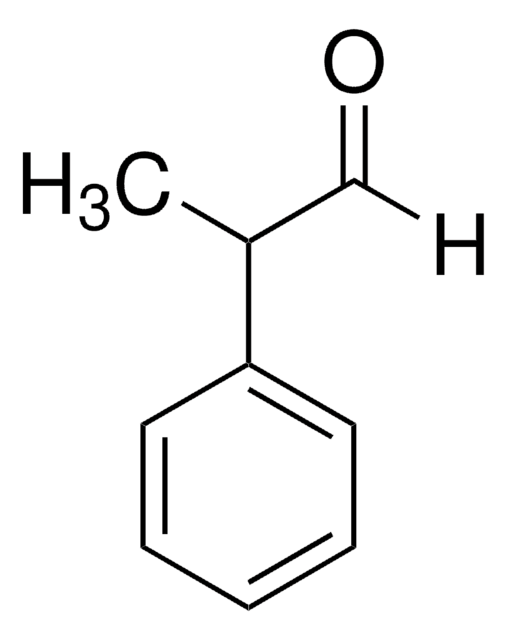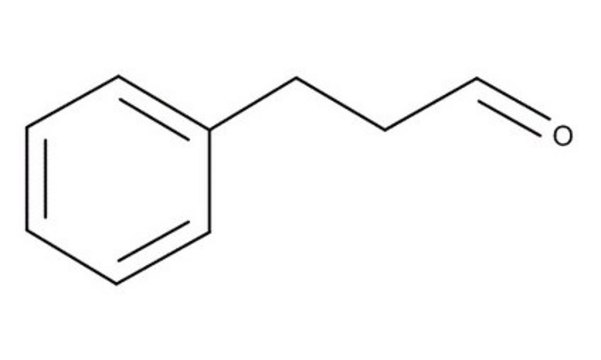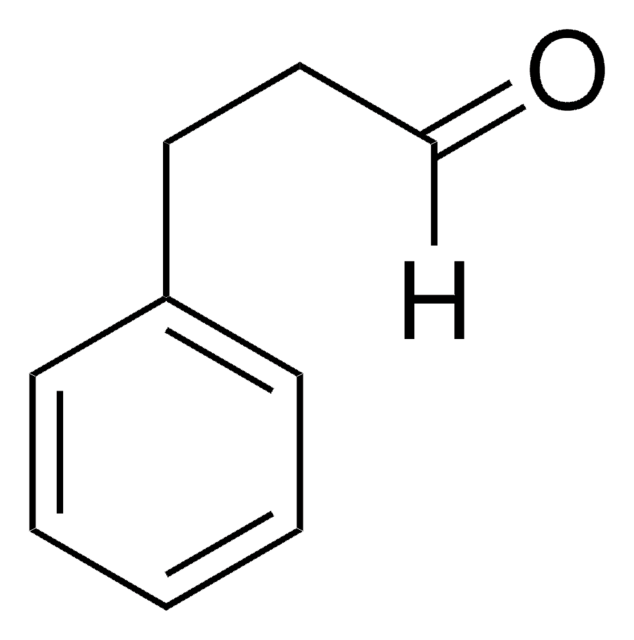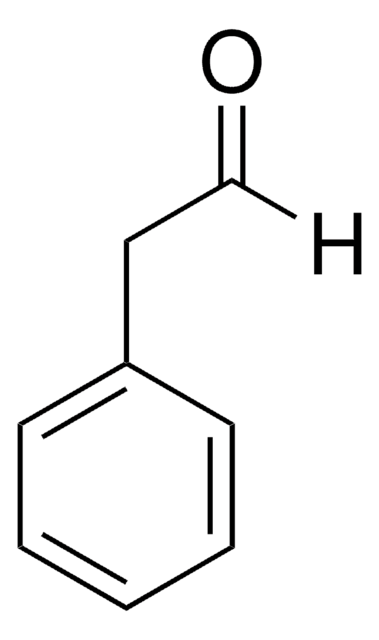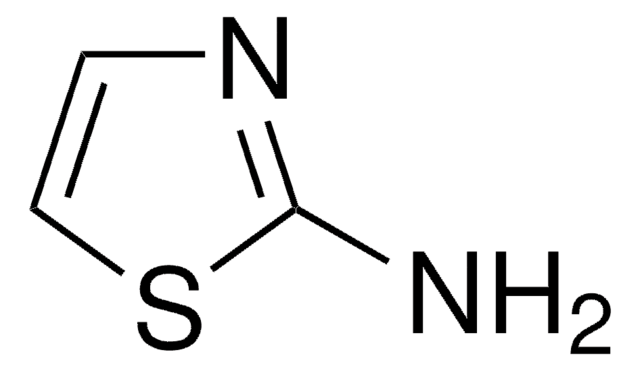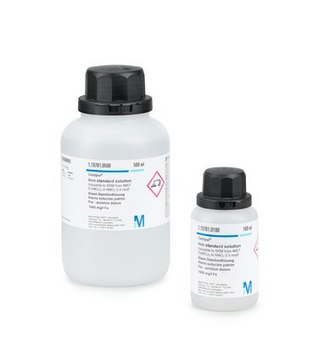所有图片(1)
About This Item
线性分子式:
CH3CH(C6H5)CHO
CAS号:
分子量:
134.18
FEMA编号:
2886
Beilstein:
1905601
EC 号:
欧洲委员会编号:
126
MDL编号:
UNSPSC代码:
12164502
PubChem化学物质编号:
Flavis编号:
5.038
NACRES:
NA.21
性状检查:
fresh; green; floral
等级:
FG
Halal
Kosher
Halal
Kosher
生物来源:
synthetic
Agency:
meets purity specifications of JECFA
食品过敏原:
no known allergens
推荐产品
生物来源
synthetic
质量水平
等级
FG
Halal
Kosher
Agency
meets purity specifications of JECFA
管理合规性
EU Regulation 1334/2008 & 178/2002
FCC
FDA 21 CFR 172.515
方案
≥95%
折射率
n20/D 1.517 (lit.)
沸点
92-94 °C/12 mmHg (lit.)
密度
1.002 g/mL at 25 °C (lit.)
应用
flavors and fragrances
文件
see Safety & Documentation for available documents
食品过敏原
no known allergens
性状检查
fresh; green; floral
储存温度
2-8°C
SMILES字符串
[H]C(=O)C(C)c1ccccc1
InChI
1S/C9H10O/c1-8(7-10)9-5-3-2-4-6-9/h2-8H,1H3
InChI key
IQVAERDLDAZARL-UHFFFAOYSA-N
正在寻找类似产品? 访问 产品对比指南
一般描述
2-Phenylpropionaldehyde is used in perfumes for its green hyacinth odor.
应用
- Cytotoxicity, early safety screening, and antimicrobial potential of minor oxime constituents of essential oils and aromatic extracts.: Explores the safety and effectiveness of 2-Phenylpropionaldehyde among other compounds in essential oils, highlighting its potential antimicrobial properties and implications for food safety and preservation (Strub DJ et al., 2022).
- Spectroscopic Evidence for a Cobalt-Bound Peroxyhemiacetal Intermediate.: This study provides spectroscopic evidence of a cobalt-bound intermediate in reactions involving 2-Phenylpropionaldehyde, advancing our knowledge of chemical reaction mechanisms and catalysis (Cho J et al., 2021).
储存分类代码
10 - Combustible liquids
WGK
WGK 1
闪点(°F)
174.2 °F
闪点(°C)
79 °C
个人防护装备
Eyeshields, Gloves, type ABEK (EN14387) respirator filter
tert-Butyldimethylsilylated cyclodextrins: versatile chiral stationary phases in capillary gas chromatography.
Maas B, et al.
Journal of Chromatographic Science, 33(5), 223-228 (1995)
M Popović et al.
Chemical research in toxicology, 17(12), 1568-1576 (2004-12-21)
Felbamate (2-phenyl-1,3-propanediol dicarbamate, FBM) can cause aplastic anemia and hepatotoxicity. The mechanism of FBM-induced toxicities is unknown; however, it has been proposed that 2-phenylpropenal, a reactive metabolite of FBM, is responsible. The pathway leading to this metabolite involves hydrolysis of
C M Dieckhaus et al.
Chemical research in toxicology, 14(5), 511-516 (2001-05-23)
Felbamate has proven to be an effective therapy for treating refractory epilepsy. However, felbamate therapy has been limited due to the associated reports of hepatotoxicity and aplastic anemia. Previous research from our laboratory has proposed 2-phenylpropenal as the reactive metabolite
C D Thompson et al.
Chemical research in toxicology, 9(8), 1225-1229 (1996-12-01)
We propose that 3-carbamoyl-2-phenylpropionaldehyde is an intermediate in the metabolism of felbamate, an anti-epileptic drug with a unique profile of the therapeutic activity, and undergoes a cascade of chemical reactions responsible for the toxic properties of the parent drug. To
Robert J Parker et al.
Chemical research in toxicology, 18(12), 1842-1848 (2005-12-20)
Evidence has been presented suggesting that a reactive metabolite, 2-phenylpropenal (ATPAL), may be responsible for the toxicities observed during therapy with the antiepileptic drug felbamate (FBM). Formation of ATPAL from its unstable immediate precursor, 3-carbamoyl-2-phenylpropionaldedhyde (CBMA) requires the loss of
我们的科学家团队拥有各种研究领域经验,包括生命科学、材料科学、化学合成、色谱、分析及许多其他领域.
联系技术服务部门